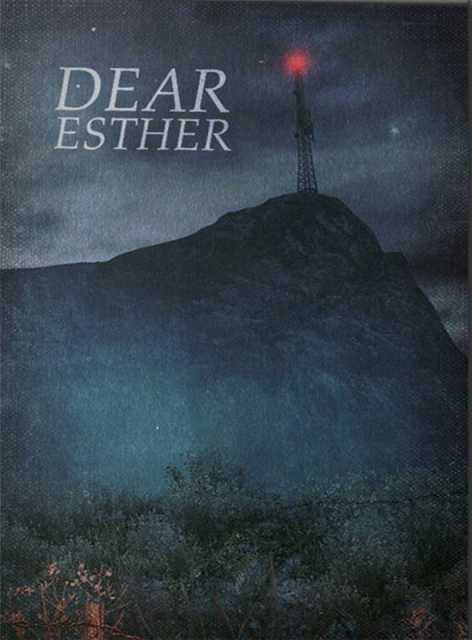A thought provoking experience that leaves you wanting more
There is a lot to say about Dear Esther, which is quite a feat considering the game only lasts for about one hour and thirty minutes. Originally published as a mod for the source engine in 2008 by developer thechineseroom, it has been rebuilt with better visuals and level design and made available for purchase on Steam. Created to be more of an experience rather than a game, Dear Esther is a unique take on the first person genre.
The story starts off with a man, presumably the character you are playing as, reading a letter to an unknown character named Esther while standing on the shore of what seems to be a fairly large island. From here, the player walks along the islands various paths, finding interesting areas to explore along the way. While walking along the paths and when reaching key points on the island, the main character will continue to read different passages of his letters, all of which seemed to be addressed to this unseen 'Esther'. The visual exploration and the reading of the letters are all there is to the experience, so thankfully Dear Esther handles both of these things extraordinarily well.
The graphics, built using Valve's source engine, are absolutely stunning. Although it is not the most technically advanced game out there, Dear Esther uses the source engine to its utmost potential. The wind near the shore blows with great force, leaves fly through the air, and the grass waves around almost realistically. The entire island is constructed in a very smart way, with multiple paths and landmarks to witness along your journey. From an old cottage sea house, to vast caves, to crashed ships, there is a lot to see and a lot to take in. As you traverse the island throughout the games four chapters, what you see and experience is quite extraordinary. The lighting of the setting sun and moon, the quietness of the island, and the bleak, cold air all bring out a strong set of emotions within the player. As I started my journey I had feelings of excitement and adventure and by the end I had experienced feelings of awe, wonder, and sadness. The island surrounds you in so much mystery that you can't help but get so many mixed emotions. This only fuels the desire to continue to move forward and discover what more the island has to offer.
While half of the story is told through the visuals, the other half comes from the narration. Each letter read is generally related to an object or a landmark that you are currently viewing so the writing and the visuals work together to lead you along what has happened on this island. While there are many clear connections between what you are seeing and hearing, the writing is not by any means meant to tell you exactly what is going on. Every letter is filled with ambiguity. Also, this is not your standard video game narration. The writing uses very dense language that is filled with symbols and metaphors, so much so that at times I felt like I was being read a Walt Whitman poem. I have very mixed feelings about this mainly because the writing is so creative and thought provoking that I found myself losing track of what was being said. With such beautiful scenery to look at at the same time, I found that I needed to stop walking around and focus on only the writing to be able to understand even a little of what was going on. If I focused on the environment while a letter was being read, I wouldn't hear any of the reading, and if I focused on the words while continuing to walk I would completely miss out on parts of the environment. I would have liked to have been able to focus on both parts of the game at once, but the dense writing made that pretty much impossible to do.
Another issue I have with the game is the total lack of interaction with the world. Beyond being able to walk around, you can not do anything else with the environment. While being able to jump was obviously unnecessary, it would have really added to the experience if I could have picked up items in the world and inspected them, or if there was a set of collectibles to find that added more material and insight into the game's story. While the game still handles what it does remarkably well, that extra amount of interactivity would have went a long way toward fully immersing me within the world.
With all nit picking aside, Dear Esther is a truly wonderful experience because it tells its story in such a unique way. Instead of hand feeding the player the exact information to piece together the mystery of what is going on, Dear Esther gives the player just enough pieces to put together the story in the way they see fit. Rather than having one clear cut narration, the story of Dear Esther can be interpreted in many different ways. This gets the player to think creatively and gives you a different kind of feeling than pretty much any other game you can play. When I finished the game, I made sense of it all in my own personal way, which was something I don't think I have ever done with a game before. While it could have done a bit more to better the experience, Dear Esther is one of the most thought provoking and creative works of art in the game industry.

1 Comments